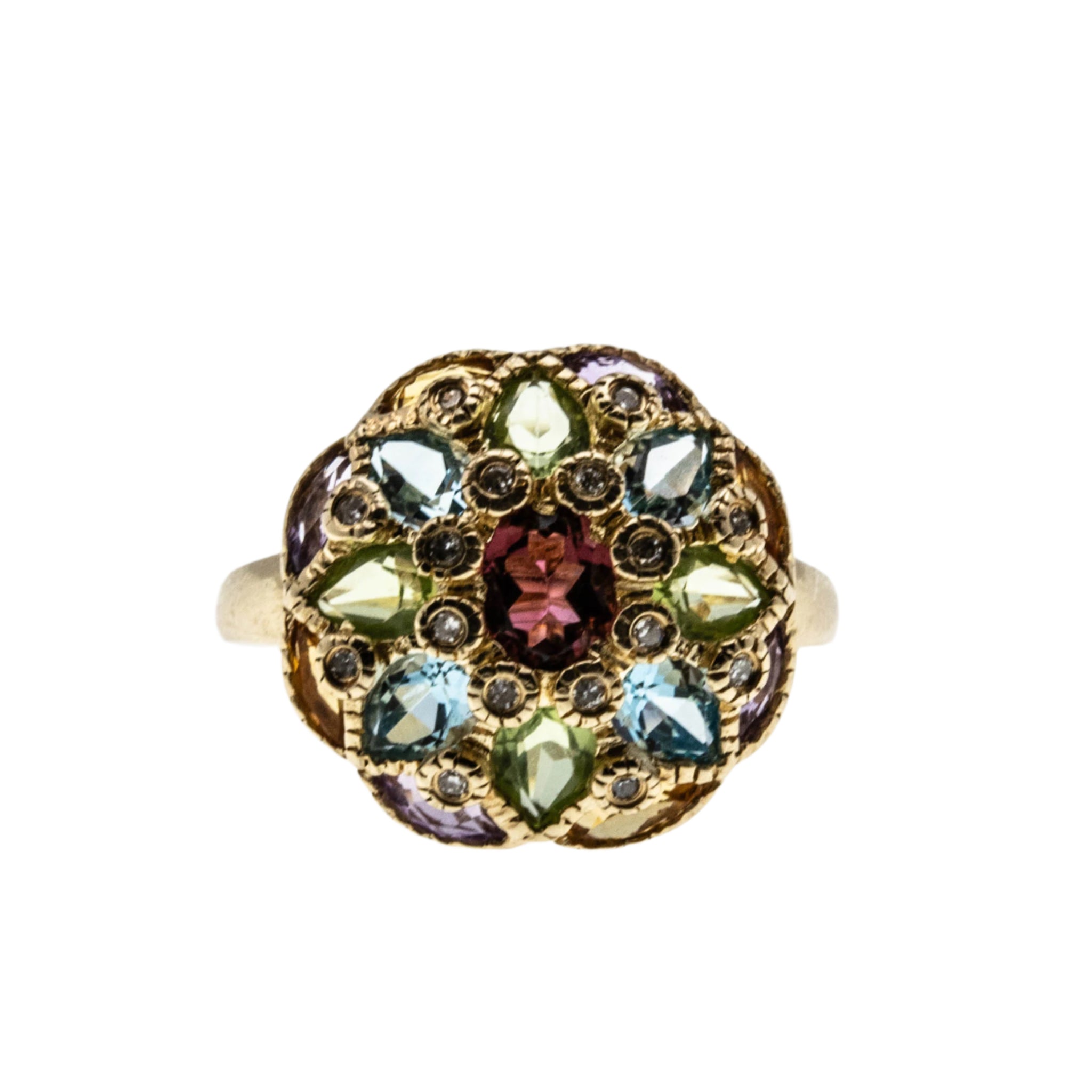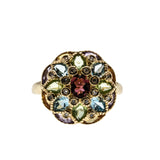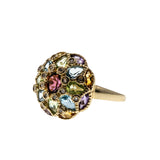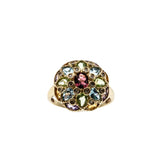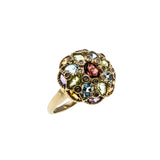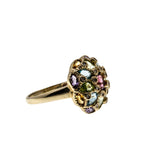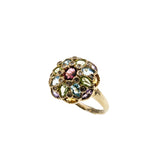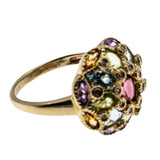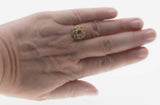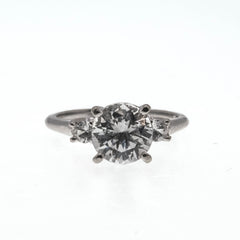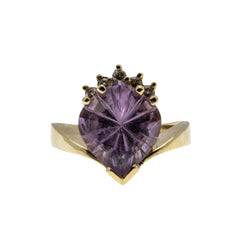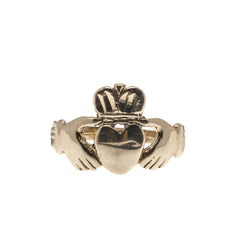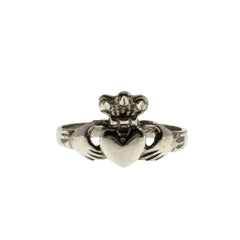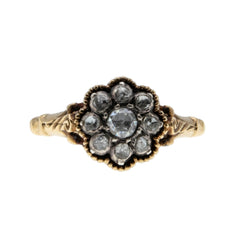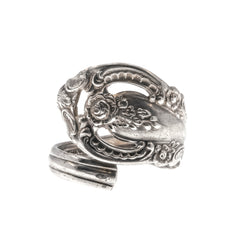Kaleidoscope - Vintage 14K Gold Natural Multi-Stone Dome Cluster Ring (VR1026)
Rarities Antique Jewelry
Kaleidoscope - Vintage 14K Gold Natural Multi-Stone Dome Cluster Ring. This unique ring is crafted from 14K yellow gold, hallmarked 14K, tested , and confirmed. The ring features 4 natural marquise shaped citrines, 4 natural marquise shaped amethyst, 4 natural pear shaped peridot, 4 natural pear shaped blue topaz, one oval cut pink tourmaline, 16 natural round cut diamonds, vintage era styling, and quality craftsmanship. The gallery on this ring is shaped as a dome, and adorned by an array of colourful gemstones, which are interspaced by diamonds. The gallery also features wonderful milgrain decoration around each bezel, adding character and detail to the beautiful ring. The band is polished and smooth, which allows for a comfortable fit and easy sizing. This vintage beauty looks stunning when worn, truly a wonderful addition to any fine jewelry collection:
Note: Appraisal included with the ring.
History: The earliest diamonds were found in India in 4th century BC, although the youngest of these deposits were formed 900 million years ago. A majority of these early stones were transported along the network of trade routes that connected India and China, commonly known as the Silk Road.
These ancient Egyptian gemstones came from deposits on a small volcanic island in the Red Sea called Topazios, now known as St. John's Island or Zabargad. Ancient Egyptians called peridot the “gem of the sun,” believing it protected its wearer from terrors of the night.
Ancient Greeks and Romans believed this gemstone could ward off the intoxicating powers of Bacchus and keep the wearer clear-headed and quick-witted. English regalia were decorated with amethysts during the Middle Ages to symbolize royalty. Amethyst jewelry has been found and dated as early as 2000 BC.
In ancient times, people believed that citrine gemstones could calm tempers, soothe anger and manifest desires, especially prosperity. To leverage these powers, Egyptians used citrine gemstones as talismans, the ancient Greeks carved iconic images into them, and Roman priests fashioned them into rings.
In mythology, topaz is portrayed as a gem of peace and healing. It was first found by the Romans over two millennia ago on the Island of Topazios in the Red Sea. They believed it could protect its wearer from enemies and bring reconciliation.
The first discoveries of pink tourmaline were in in Maine in 1822. The Maine deposits usually produced crystals in raspberry pink-red, as well as minty greens. One of the earliest reports of pink tourmaline found in California was in 1890 by Charles Russell Orcutt.
Pink tourmaline can be found throughout the world. Rich deposits have been mined in the United States, Brazil, Nigeria, Mozambique, Madagascar, Afghanistan, and Namibia. The finest quality stones are found in the Muzo mines of Brazil and in Namibia. Namibian pink tourmaline has a very intense colour.
Gold was generally used for a couple thousand years solely to create things such as jewelry and idols for worship. This was until around 1500 BC when the ancient empire of Egypt, which benefited greatly from its gold-bearing region, Nubia, made gold the first official medium of exchange for international trade.
Measurements: Face of the Ring 15.00 mm x 14.50 mm
Stone Size: Citrine .20 carats Amethyst .20 carats Peridot .20 carats Blue Topaz .20 carats Tourmaline .15 carats Diamond .08 carats Total Weight: 1.03 carats
Weight: 3.32 grams
Ring Size: 6 1/4
Condition: Excellent
Origin: America
Date: Circa 1980

